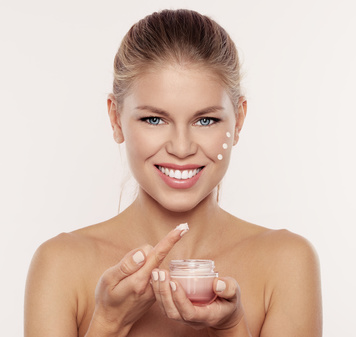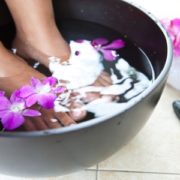6 Contributing Factors to Skin Damage

While we cannot survive here on earth without the sun, it along with other many contributing factors increase a persons risk for skin damage and skin cancer. Here are 6 of them along with what to look for.
1. Use of tanning beds and tanning lamps.
2. The risk of skin damage and skin cancer is directly related to the number of times a person gets a sunburn but even those who tan without burning have caused skin damage.
3. Our physical characteristics can also contribute to the risk we have of damaging our skin.
4. People with fair skin, freckles and fair hair tend to be more susceptible to getting sunburns. However people with darker skin tones need to take precautions as well.
5. Certain medications (e.g., antidepressants, acne medications, antibiotics). Patients should always discuss risk factors of their medications and sun sensitivity with their practitioner.
6. Family history – If someone in your family has had skin cancer it increases your risk as well.
It is very important to learn what to look for and how to monitor the skin for changes especially if you have moles, brown spots or sores that don’t heal properly.
Sunburn and age spots are two issues that can be avoided or diminished if you take proper care of your skin.
SUNBURN:
Signs – Redness of the skin, stinging pain and the feeling of heat coming off the skin’s surface.
The pain of a sunburn usually worsens following exposure to the sun and will last up to two days.
Mild sunburns can have small blisters that are almost unnoticeable and can lead to the skin peeling after a few days. Sunburns can also lead to abdominal cramping, flu like symptoms, fever, chills and headaches.
Too much sun exposure can also cause heat stress or heat stroke.
A serious sunburn can also get infected and should be treated immediately. Signs of infection include a high fever and increased redness.
AGE SPOTS / BROWN SPOTS:
Age spots can appear all over your body but are most commonly seen on the face and hands as they are the areas that are most exposed to the sun. Age spots or brown spots can also be called liver spots.
Signs- Age spots are flat and usually brown, black or tan in colour. They can be all different sizes. Any person at any age can get age spots especially if they spend a lot of time in the sun but most commonly appear on the skin of people over the age of 50.
Sometimes age spots can look cancerous but true age spots are harmless and don’t need any treatment. Quite often people don’t like the look of age spots and have them lightened with special creams or removed by a specialist.
The best way to deal with age spots is to try and prevent getting them in the first place which means avoiding the sun and always using sunscreen.
In our next blog we’ll discuss the signs and symptoms of skin cancer (melanoma).
In the meantime we welcome your questions and feedback. You can connect with us via email or telephone, leave a comment right here on the site or click the contact tab at the bottom of the screen if you are reading this post on the website. Join in the conversation on Facebook too!
Until next time,
Jana
[xyz-ihs snippet=”CALL”]







Leave a Reply
Want to join the discussion?Feel free to contribute!